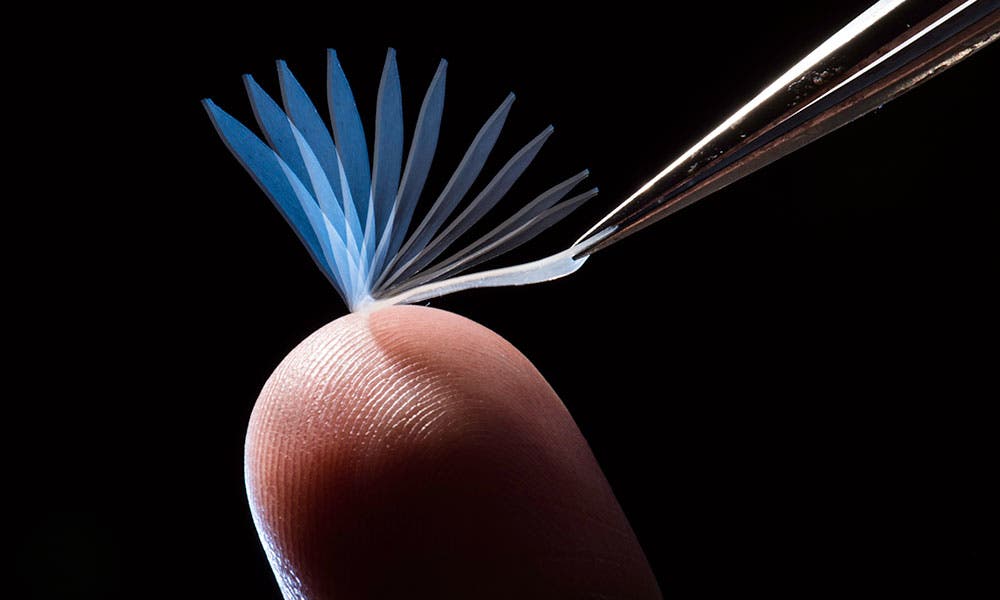This polymer can change shape and release tremendous amounts of stored elastic energy relative to its weight simply by being exposed to a temperature change. This in itself isn’t exactly new, but the team led by Chemical Engineering Professor Mitch Anthamatten at the University of Rochester innovated by making the polymer react to room temperature — a first.

A multiple-exposure image of a new shape-memory polymer reverting to its original shape after being exposed to body temperature. (University of Rochester photo / J. Adam Fenster)
The material belongs to a class called shape-memory polymers. These materials can be programmed to retain a specific shape until triggered to return to the original shape — in our case, by heat.
“Our shape-memory polymer is like a rubber band that can lock itself into a new shape when stretched. But a simple touch causes it to recoil back to its original shape,” said Anthamatten in a statement.
To reach this level of control, the polymer’s crystallization that occurs when it gets cooled or stretched was tweaked just right. When deformed, chains of the memory polymer become stretched while smaller segments become aligned in the same direction across small areas. This fixes the material. The more of these concentrated areas you have in the material, the more stable the shape and the more difficult it is for the material to revert back to its original shape.
Eventually, the researchers learned to trigger the material rewind to any temperature by including molecular linkers to connect the individual polymer strands. In one demonstration, the polymer was set to revert back to its original shape at sub room temperature. Touching the material with one finger was enough.
What’s amazing is that once triggered, the polymer releases its stored elastic energy. Anthamatten’s shape-memory polymer is capable of lifting an object one-thousand times its weight. For example, a polymer the size of a shoelace—which weighs about a gram—could lift a liter of soda. As a demonstration, his team used a small band of the material to pull a toy truck up an incline or lifting weights.
This is cool, but any practical use for it? Anthamatten says his shape-memory polymer could prove very handy as sutures, artificial skin, body-heat assisted medical dispensers, and self-fitting apparel.









